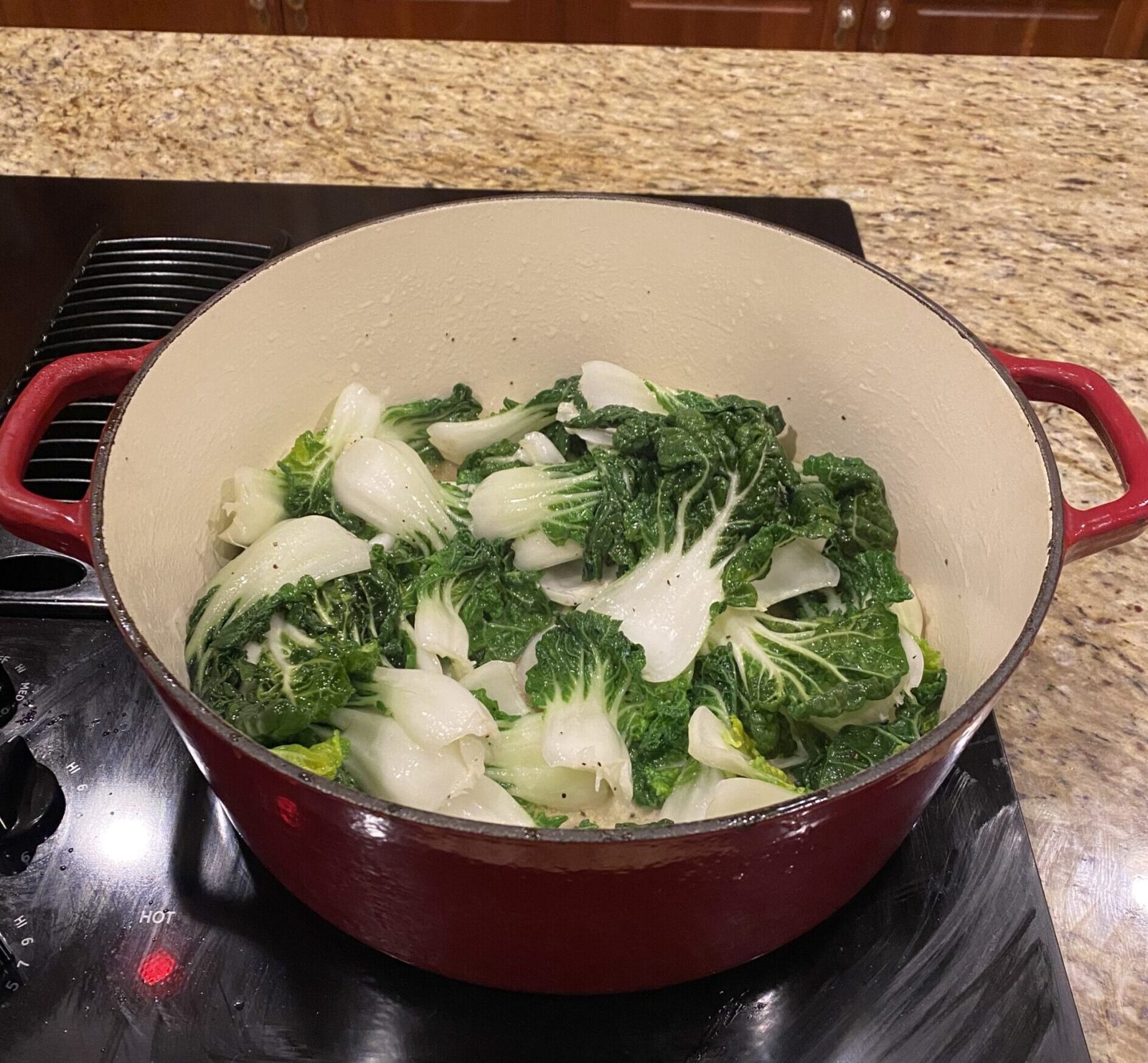Stir frying vegetables is simple and a healthful way to eat. One of the greatest things about stir-frying is its versatility in producing both tasty vegetable and meat-inspired dishes. After a long day at work, particularly on a cold evening, I love a hot meal. In the winter, salads just don’t quite do it for me. Below is how I cook baby bok choy in about 15 minutes (including prep time).
What You’ll Need
Baby Bok Choy
Salt
Pepper
Baby bok boy may be challenging to find in the typical US chain grocery store. I typically find mine at local Asian supermarkets. “Bok choy” translated in Chinese is “white vegetable”. Needless to say, there are many types of bok choy. Both baby bok choy and the large bok choy are able to maintain their crunch when stir-fried. However, I find the baby bok choy more tender.
- Clean the baby bok choy and separate its leaves from the center. The center of the baby bok choy is quite flavorful so definitely keep that part. However, I do recommend getting rid of the hard stem upon which the baby bok choy sits. In the interest of time, I don’t cut the leaves in half. However, to make cutting/chewing easier while enjoying this dish, you could slice the leaves vertically in half.
- Heat the oil in a deep pan. Due to the relatively low smoke point olive oil has in comparison to canola or vegetable oils, I typically use canola or vegetable oil when stir frying. Stir-frying can be easier in a wok. But a dutch oven is just fine.
- Don’t wait for the oil to get too hot or smoky. If you let the oil get too hot or smoky, then you may end up with a huge splatter of oil everywhere or burnt vegetables when the baby bok choy touches the pan.
- Once the oil is slightly warm, I toss in my vegetables. I move the vegetables around to coat them with the oil. After a few minutes, the baby bok choy will start to wilt slightly. That’s the opportunity to put in some salt and pepper to your liking. I don’t use a lot of salt because I’m just not a big fan of large amounts of salt.
- To decrease the amount of smoke produced during stir-frying, at the point when the leaves start to wilt, I will cover the pot with a lid then turn the heat off. After a few minutes, the residual heat will have cooked the vegetable thoroughly.
